Kinect vs. Move: The motion controller hands-on deathmatch
Or hands-off in Kinect's case. Either way, here's our comparison verdict
Kinectimals
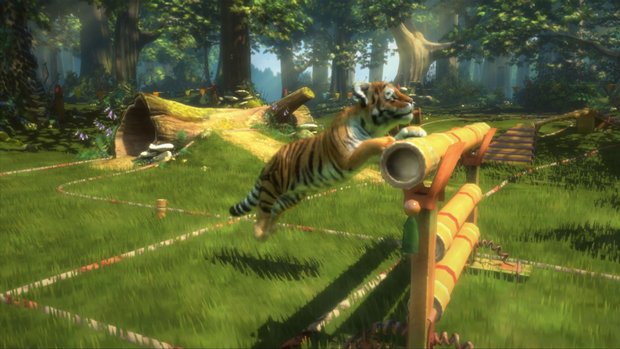
We didn’t actually play Frontier’s virtual pet sim ourselves, but we had an up-close-and-personal demo and were able to get a good impression of how well it works. And regardless of that mortifying E3 demo, it seems to work pretty well, the various cats reacting very well to voice commands and physical actions. Regardless though, unless you have young kids it’s 99% completely unlikely thatyou'll everwant to play this. The most exciting thing we saw was an assault course section controlled by jogging on the spot and jumping to avoid obstacles. And with that, Skittles was dead to us.
Kinect Adventures
We got to play three sections of the mini-game collection. They were:
River Rush
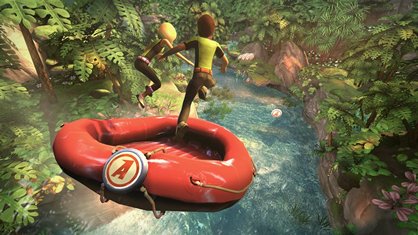
That white-water rafting game that was demoed with all the cool of a lobotomy outpatient at E3. You and a partner stand side-by-side and lean left and right to steera raft through a winding, multi-layered river course. Synchronised movements result in faster steering, while uncoordinated wobbling results in a whole lot of bumping about. The controls work well, despite suffering from the same laggy response as everything else we played, but overall, the game lacked any real sense of speed or excitement. Maybe that was deliberate to compensate for the lag. It's certainly a possibility.
Rally Ball
Sign up to the GamesRadar+ Newsletter
Weekly digests, tales from the communities you love, and more
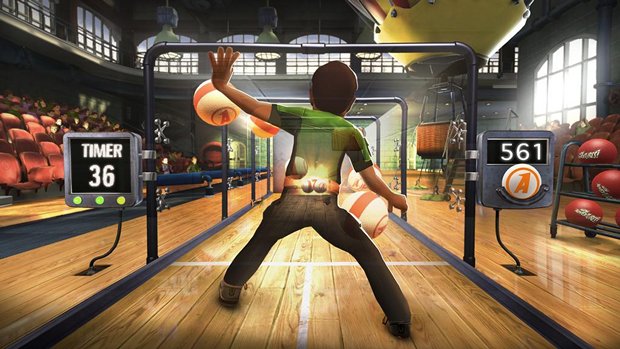
That squash-inspired game where you have to block and deflect balls using your body. It was kind of fun, in a frantic, nonsensical way, and we were really impressed by the way the balls reacted to any part of our bodies. There was a hell of a lot of nuance in the movements Kinect picked up, from the biggest arm flail to the subtlest poke of a toe or flick of a hand, and overall it was a decent showcase for the level of motion capture Kinect can pull off. But thanks to yet more lag we found it tricky to get precise timings right, and thanks to the flail-heavy nature of the gameplay we found it tricky to avoid elbowing our multiplayer partner in the cheekbone. Sorry about that again.
That minecart thing we can't remember the name of
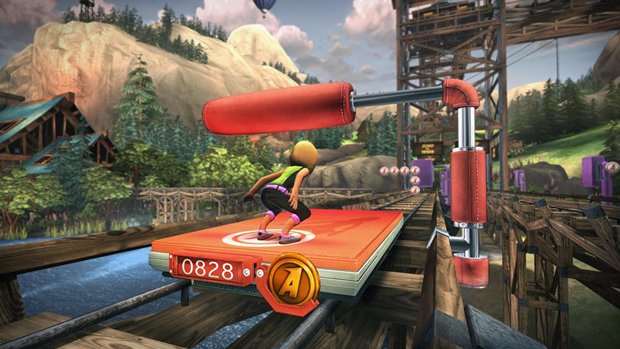
Yawn. This one consists of standing on a slow-moving, on-railsplatform, slowly sidestepping around oncoming obstacles, and slowly moving your arms around to collect tokens floating in the air at various angles. You can jump for a quick speed boost, but it’s still slow. Did we mention thatit's slow? By this point our suspicions that Kinect’s games had been speed-gimped to allow for lag was wailing in our ears like a banshee with a klaxon horn.
Joyride
Joyride was definitely the best Kinect game we played. Namely because it actually felt like a proper game. Well, nearly. You steer with mimed steering wheel actions, and Kinect’s interpretations ofthem are mighty accurate. This was certainly the most lag-free experience we had with any of the games. In fact the game’s response times and accuracy were good enough that we barely noticed any unless we were looking for it. But the reason for that ominous ‘nearly’ up there?
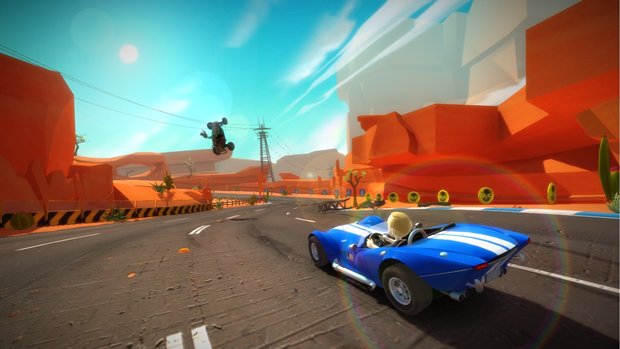
Automatic acceleration. And another spectacular no-show for the increasingly absent Jimmy McSpeed. With only steering gestures available, we had no control over our car’s velocity at all, bar the occasional back-and-forth arm pump to activate a nitro. But that didn’t really matter in gameplay terms, because even once our car had asthmatically crawled to its meagre top speed, the wide, banking tracks offered very little in the way of driving challenge. Weebling around in the air after jumps to egange a variety of basic trick combos offered a brief spark of interest, but needless to say, the market is still wide open for an SSX comeback.
Kinect Sports
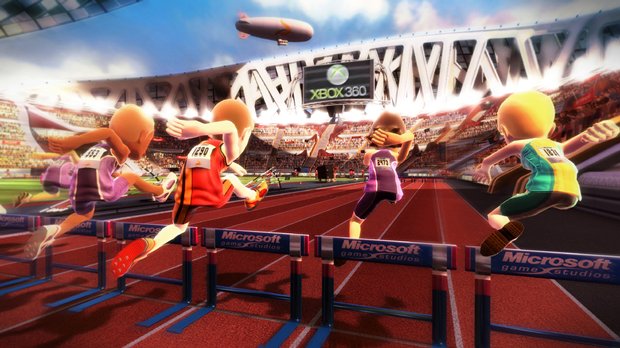
We only got to play the hurdles event from Rare’s sport compilation. We were impressed by the unnecessary attention to detail paid by the motion capture during the event – Free-form victory arm pumps are a must – but once again found zero in the way of challenge. 11 seconds of on-the-spot knee-pumping and we had a world record. On our first go. As for overcoming the hurdles themselves, that was no more challenging.There's a window of opportunity for a successful jump, and as you approach each hurdle agreen lightflashesto indicate that it has begun. And that window is incredibly lengthy, giving the whole thing a rather pre-canned Prince of Persia 2008 feel. Ho hum.
Next: Is Move's line-up any better?



